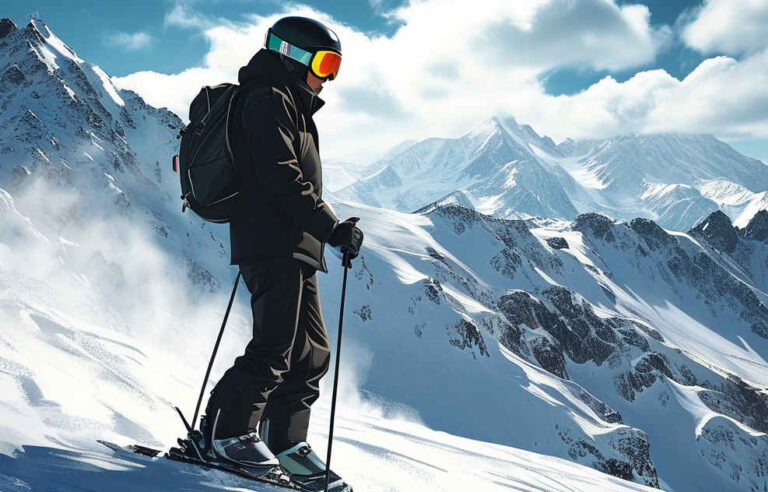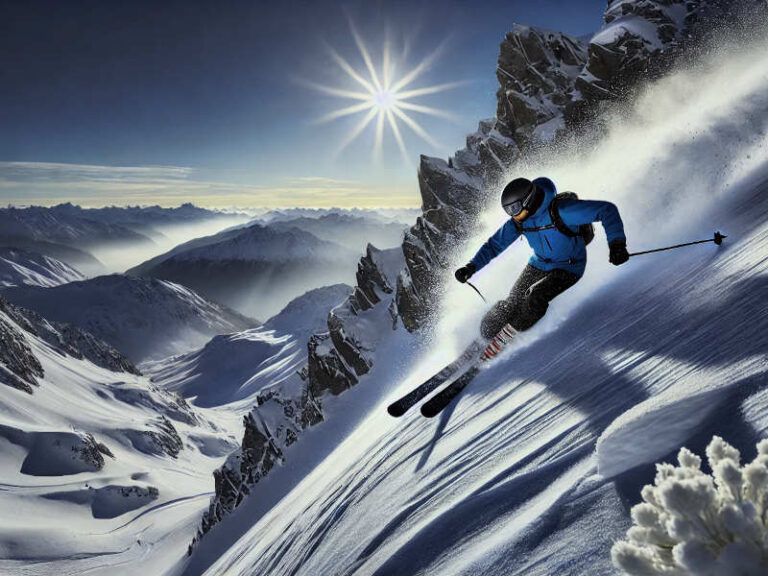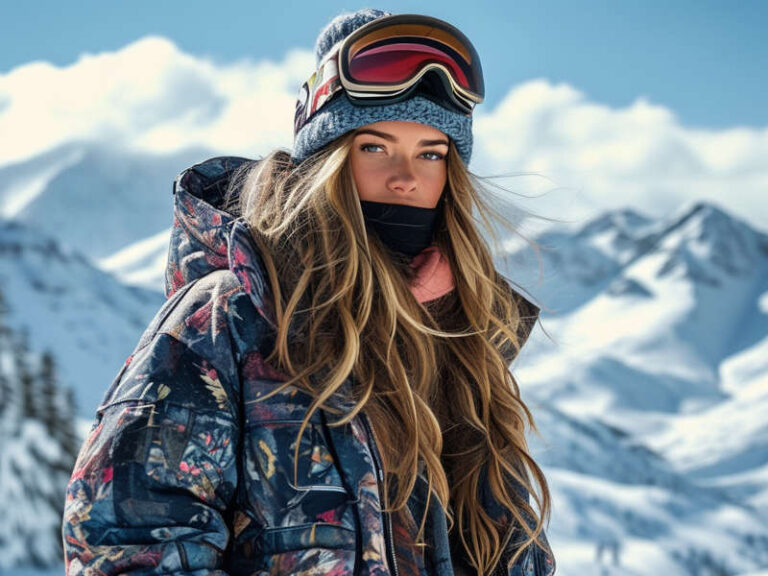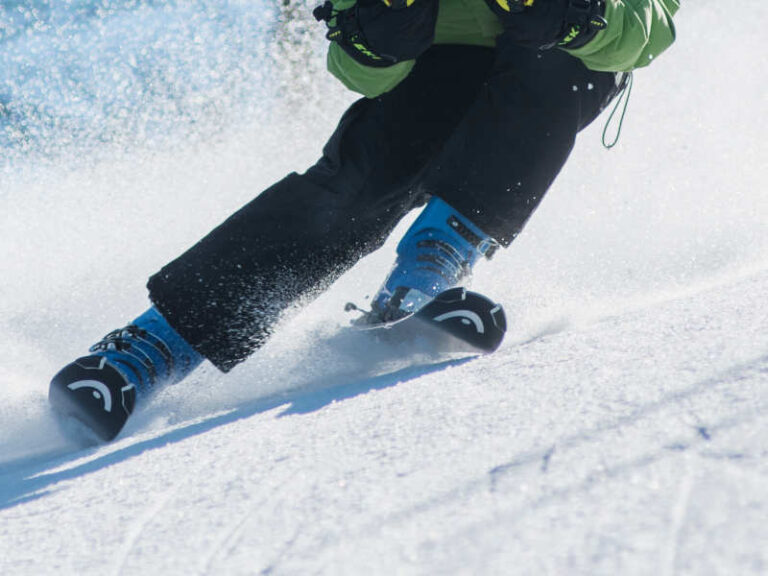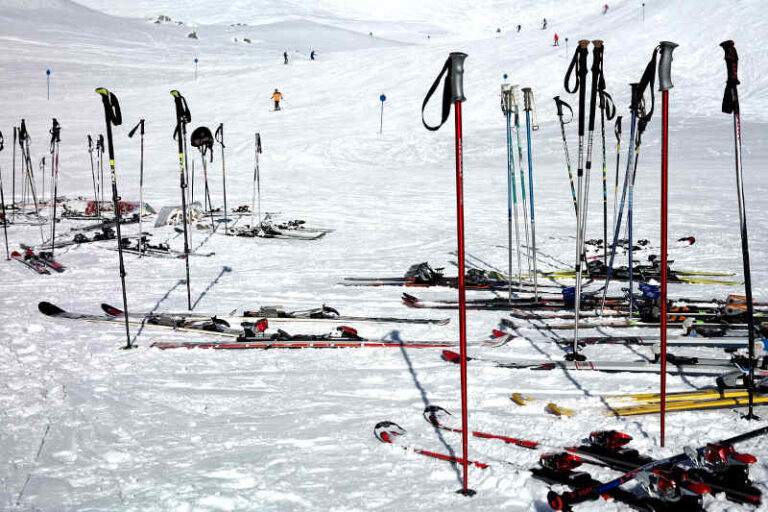Top Warm-Up Routines for Downhill Skiing
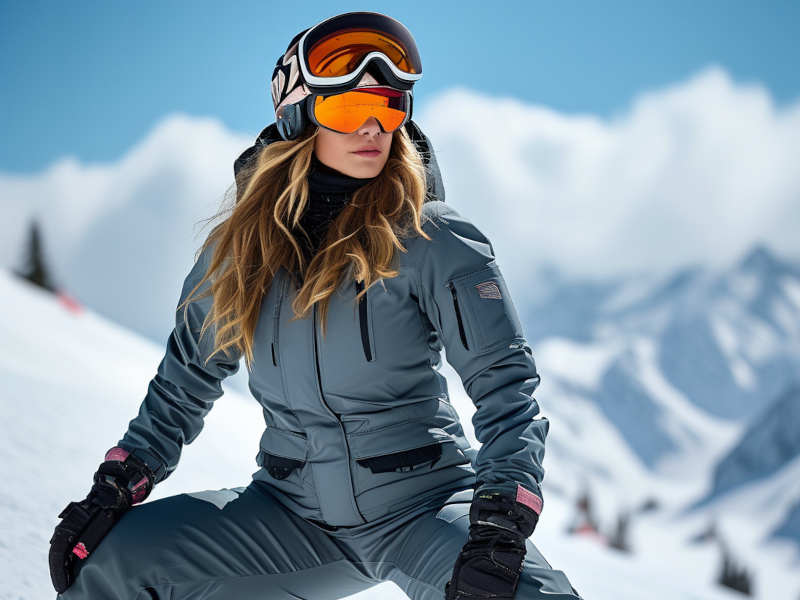
Getting ready for downhill skiing involves more than grabbing your gear and heading up the mountain. Warming up and preparing both physically and mentally are key to staying injury-free, skiing with confidence, and having an incredible time. Let’s dive into the top warm-up exercises, pre-ski yoga moves, essential tips on getting your body and mind ready to shred, and the long-term training routine for staying fit through the ski season.
Whether you’re a beginner or just want to step up your game, here’s your ultimate guide to warming up for downhill skiing.
Top 8 Recommended Warm-Up Exercises for Downhill Skiing
Below are 8 exercises that target your legs, core, and upper body. These warm-ups focus on activating muscles, increasing blood flow, and loosening up joints for better control and stability on the slopes.
Leg Swings
Loosen hips and improve range of motion by swinging each leg forward and backward, then side to side.
How to do Leg Swings as a skiing warm-up:
- Find Your Balance: Stand next to a wall, fence, or anything sturdy for support. Place one hand on it to steady yourself.
- Forward and Backward Swings: Lift one leg slightly off the ground and start swinging it forward and backward in a controlled motion. Keep the swing smooth, not too high, and let your leg naturally extend without forcing it. Aim for a 90-degree angle in front of you and slightly behind, engaging your hip flexors and glutes.
- Side-to-Side Swings: After a few forward-backward swings, turn sideways to your support and swing the same leg from side to side in front of you. Start with a low arc and gradually increase the swing as you feel comfortable.
- Repeat on the Other Leg: Switch legs and repeat both the forward-backward and side-to-side swings.
Tip: Keep your upper body stable while your leg moves freely. Each swing should feel smooth and easy to help loosen up your hips and improve your range of motion.
Lunges with a Twist
Step forward, then twist your torso toward your front leg to engage your core and stretch your hip flexors.
How to do Lunges with a Twist as a skiing warm-up:
- Stand Tall: Start with feet hip-width apart, standing up straight with your shoulders back. Hold your hands together at chest level or place them on your hips to help with balance.
- Step Forward: Take a big step forward with your right foot. Lower your body down into a lunge by bending both knees until your right thigh is parallel to the ground and your left knee hovers just above the floor. Your right knee should be aligned over your ankle, and your back should be straight.
- Engage Your Core: As you lower into the lunge, tighten your core muscles to stabilize your torso. This helps with balance and keeps your movement controlled.
- Add the Twist: Once you’re in the lunge position, twist your torso to the right (toward your front leg). Aim to rotate from the torso, not just the shoulders, to deepen the stretch and engage your obliques and core. Keep your arms outstretched in front of you or hold your hands together for added stability.
- Return to Center: Rotate your torso back to face forward, then push through your right heel to return to the starting position, standing tall.
- Repeat on the Other Side: Step forward with your left leg and twist to the left, following the same steps.
- Complete the Set: Aim for 10-12 reps per side to fully engage your core, stretch your hip flexors, and activate your lower body muscles.
Tips:
- Stay Slow and Controlled: Avoid rushing through the movement. The twist should be steady and deliberate to maximize the stretch.
- Maintain Good Form: Keep your back straight and shoulders down to avoid straining your neck or lower back.
- Breathing: Inhale as you lunge forward, and exhale as you twist your torso.
Benefits for Skiing: Lunges with a Twist help prepare your legs for the dynamic movements in skiing, improve core stability, and increase flexibility in your hips and spine, making it easier to handle turns and quick directional changes on the slopes.
Squats
Strengthen your quads, glutes, and calves with basic squats, keeping your back straight and lowering to a 90-degree angle.
How to do Squats to warm up for skiing:
- Starting Position: Stand with your feet shoulder-width apart. Your toes should point slightly outward (about a 15-degree angle), which allows for a natural range of motion in your hips.
- Engage Your Core: Tighten your core muscles to keep your spine stable and prevent your lower back from arching. Think about drawing your belly button toward your spine without holding your breath.
- Lowering Down: Begin the squat by pushing your hips back as if you’re about to sit in a chair. Bend your knees and lower your body slowly, keeping your chest up and your back straight. Your weight should be in your heels, not on your toes.
- Go to 90 Degrees: Continue lowering until your thighs are parallel to the floor, or as close to it as possible. Aiming for a 90-degree angle at your knees helps to maximize the strength-building benefits while being easier on your joints.
- Knees Over Toes: Keep your knees aligned over your toes throughout the movement. They shouldn’t collapse inward, which can strain your knees. Press them slightly outward if needed to keep them aligned with your feet.
- Rise Back Up: Push through your heels and straighten your legs to return to the starting position. Squeeze your glutes at the top of the movement to complete the squat.
- Repeat for Reps: Aim for 10-15 repetitions to fully activate your quads, glutes, and calves.
Tips:
- Chest Up, Back Straight: Avoid rounding your back or tipping your torso forward. Keep your chest up and gaze forward to maintain good posture.
- Breathing: Inhale as you lower into the squat and exhale as you push back up to standing.
- Foot Position: If you feel discomfort in your knees, try adjusting your foot position slightly. A wider stance may feel more comfortable for some people.
Benefits for Skiing: Squats strengthen the quads, glutes, and calves, which are essential for skiing control, stability, and power. They help you handle the repetitive bending, pressure, and stability demands on the slopes, allowing for smoother turns and better endurance.
Side Lunges
Step out to the side and bend your knee, keeping the other leg straight. This exercise helps with lateral movement, essential for skiing.
How to do Side Lunges to warm up for skiing:
- Starting Position: Stand tall with your feet hip-width apart, your core engaged, and your shoulders relaxed. Place your hands on your hips or bring them together in front of your chest to help with balance.
- Step Out to the Side: Take a big step out to the right side, making sure to keep your left foot planted. As you step, shift your weight onto your right leg.
- Bend the Right Knee: As your right foot lands, bend your right knee and push your hips back, lowering your body as if you’re sitting into a chair. Your left leg should stay straight with the foot flat on the ground.
- Depth of Lunge: Lower down until your right thigh is nearly parallel to the floor or as close as you can comfortably go. You should feel a stretch in your left inner thigh. Ensure that your right knee stays aligned over your right foot and doesn’t extend past your toes.
- Keep Your Chest Up and Back Straight: Avoid leaning forward or rounding your back. Keep your chest lifted and your back in a neutral position to maintain good posture and avoid strain.
- Push Back to Starting Position: Push through your right foot to straighten your right leg and bring your body back to the starting position, standing tall.
- Repeat on the Other Side: Now, take a big step out to the left side and repeat the movement, bending your left knee and keeping your right leg straight.
- Complete the Set: Aim for 10-12 reps on each side to fully engage your inner thighs, glutes, and quads, as well as to build lateral strength and flexibility.
Tips:
- Keep Your Weight Centered: Ensure that most of your weight is on the lunging leg (the leg with the bent knee), while the other leg remains supportive but light.
- Core Engagement: Tighten your core throughout the movement to help with stability and balance.
- Breathing: Inhale as you step out and lower into the lunge, and exhale as you push back to the starting position.
Benefits for Skiing: Side lunges are excellent for building lateral movement strength, crucial for controlling turns on the slopes. They target the inner thighs, glutes, and quads, improving stability and endurance for quick shifts and weight transfers when skiing.
High Knees
Boost your heart rate and activate your hip flexors by jogging in place and bringing your knees up to hip level.
How to do High Knees to boost your heart rate and warm up for skiing:
- Starting Position: Stand tall with your feet hip-width apart. Keep your core engaged, your chest lifted, and your arms relaxed by your sides.
- Start Jogging in Place: Begin by lightly jogging in place to get a feel for the movement. Stay on the balls of your feet to make the exercise light and bouncy, which helps with speed and rhythm.
- Raise Your Knees: As you continue jogging, start lifting your knees higher—aim to bring each knee up to hip level, or as close as you can comfortably go. Your thighs should ideally be parallel to the ground when lifted.
- Pump Your Arms: Bend your arms at a 90-degree angle and pump them in sync with your knees (right arm with left knee, left arm with right knee). This helps with balance and rhythm, keeping your upper body engaged in the exercise.
- Maintain Good Posture: Keep your back straight and avoid leaning forward or backward. Imagine a string pulling you up from the top of your head to help maintain good posture.
- Focus on Speed and Control: Try to perform high knees at a brisk pace, driving each knee up quickly but in a controlled manner. Land softly on the balls of your feet and immediately lift the opposite knee to create a smooth, continuous motion.
- Breathing: Keep your breathing steady. Breathe naturally or try to inhale through your nose and exhale through your mouth, matching your breathing rhythm to the movement.
- Duration: Aim to perform high knees for 30 seconds to 1 minute, or complete 20-30 reps on each leg to fully engage your hip flexors, warm up your core, and elevate your heart rate.
Tips:
- Core Engagement: Tighten your core muscles throughout the exercise to help stabilize your body and keep your movement controlled.
- Knee Height: If it’s challenging to reach hip level, start with a comfortable knee height and work your way up as you warm up. The goal is to lift as high as you can without sacrificing balance or form.
- Keep It Light: High knees should feel energetic and light on your feet. Focus on bouncing off the balls of your feet rather than landing hard, which reduces impact on your knees and helps maintain a steady pace.
Benefits for Skiing: High knees activate your hip flexors, which are essential for efficient leg movement in skiing. They increase heart rate, improve coordination, and warm up the lower body for the dynamic movements you’ll need on the slopes. This exercise also helps improve agility and prepares your body for quick directional changes in skiing.
Butt Kicks
Run in place, kicking your heels up to your glutes to warm up hamstrings and improve circulation.
How to do Butt Kicks to warm up your hamstrings and boost circulation:
- Starting Position: Stand tall with your feet hip-width apart. Keep your core engaged, shoulders back, and arms relaxed by your sides or bent at a 90-degree angle.
- Start Jogging in Place: Begin by lightly jogging in place on the balls of your feet. This helps you get into a comfortable rhythm before focusing on the full butt-kick movement.
- Kick Your Heels Up: As you jog, start lifting your heels toward your glutes. The goal is to bring each heel up as close to your glutes as possible, using a quick, controlled motion.
- Engage Your Hamstrings: To get the most benefit, actively engage your hamstrings each time you kick your heel up. Think of squeezing the muscles at the back of your thighs as you bring your heel up to your glutes.
- Keep Your Upper Body Stable: Maintain an upright posture without leaning forward or backward. Your torso should stay relatively stable as your legs move. Keep your core tight to help with balance.
- Arm Motion for Balance: Bend your arms at a 90-degree angle and pump them naturally in sync with your legs (left arm with right heel, right arm with left heel). This helps you stay balanced and supports a natural rhythm.
- Focus on Speed and Fluidity: Aim to perform butt kicks at a brisk pace, alternating heels quickly and landing lightly on the balls of your feet. Keep the motion smooth and fluid without excessive bouncing or impact on your knees.
- Breathing: Breathe steadily as you perform the movement. Try to inhale through your nose and exhale through your mouth, maintaining a rhythm that matches your pace.
- Duration: Aim to do butt kicks for 30 seconds to 1 minute, or perform 20-30 reps per leg to warm up your hamstrings and increase blood flow to your lower body.
Tips:
- Stay Light on Your Feet: Focus on keeping your weight on the balls of your feet, which makes the movement lighter and easier on your joints.
- Core Engagement: Keep your core tight to support your posture and reduce unnecessary swaying of your upper body.
- Range of Motion: If it’s hard to bring your heels all the way to your glutes at first, start with a smaller range of motion and work your way up as you warm up.
Benefits for Skiing: Butt kicks activate and warm up the hamstrings, which are crucial for maintaining control and balance while skiing. This exercise also increases circulation, improves agility, and prepares your legs for the repetitive motion of skiing. Plus, it helps develop a balanced muscle activation between your quadriceps and hamstrings, reducing injury risk on the slopes.
Standing Hip Circles
Loosen up your hips by rotating your legs in circles, which aids your balance and agility on the slopes.
How to do Standing Hip Circles to warm up your hips and enhance balance and agility for skiing:
- Starting Position: Stand with your feet about hip-width apart. Keep your core engaged and your upper body tall with your shoulders relaxed. For added stability, you can place your hands on your hips or extend your arms out to the sides.
- Lift One Leg: Shift your weight onto your left leg and lift your right leg a few inches off the ground. Maintain your balance by engaging your core and standing leg. It helps to focus on a fixed point in front of you to stay stable.
- Begin the Circle Movement: With your right leg lifted, start making slow, controlled circles with your knee. Begin by drawing small circles outward, moving clockwise. Gradually increase the size of each circle as you feel more comfortable. Focus on moving from the hip joint to fully engage the muscles surrounding it.
- Reverse the Direction: After 8-10 circles in one direction, switch to making circles in the opposite direction (counterclockwise). This change in direction helps to activate different muscles around your hip joint.
- Switch Legs: Once you complete the circles on your right leg, shift your weight to your right leg and repeat the same movements with your left leg, starting with small circles and gradually increasing the range.
- Maintain Good Form: Keep your upper body still and avoid leaning to either side as you move your leg. Keep your core engaged to support stability and balance throughout the movement.
- Breathing: Inhale as you prepare to start each circle and exhale as you complete the motion. This steady breathing helps keep you relaxed and focused.
- Repetitions: Aim for 8-10 circles in each direction per leg to fully loosen up your hips and activate your stabilizer muscles.
Tips:
- Focus on Smooth Movements: Keep the circles controlled and smooth, avoiding jerky or fast movements. Moving slowly allows you to feel the muscles around your hips working.
- Engage Core for Balance: To help with balance, engage your core and keep your weight centered over your standing leg.
- Increase Range Gradually: Start with small circles if you feel tightness, then gradually increase the range of motion as you feel more comfortable.
Benefits for Skiing: Standing Hip Circles warm up and loosen the hip joints, which is essential for the lateral movements required in skiing. This exercise improves hip mobility, flexibility, and balance, which help with handling turns and shifts in direction on the slopes.
Mountain Climbers
Boost heart rate and engage your core by bringing knees up toward your chest in a plank position.
How to do Mountain Climbers to increase your heart rate and strengthen your core in preparation for skiing:
- Get into a Plank Position: Start in a high plank position with your hands shoulder-width apart on the floor, directly under your shoulders. Your body should form a straight line from your head to your heels. Engage your core, keeping your back flat and your hips aligned with the rest of your body. Avoid letting your lower back sag or your hips rise.
- Position Your Feet: Extend your legs straight behind you, with your toes on the ground and your feet about hip-width apart. This stable stance allows you to move quickly without losing balance.
- Start the Movement with Your Right Knee: Lift your right foot off the ground and bring your right knee toward your chest in a controlled motion. Try to get your knee as close to your chest as you can without letting your hips lift or twist.
- Switch Legs Quickly: As you return your right foot to the starting position, immediately lift your left foot and bring your left knee toward your chest. This switching motion creates a “running” or “climbing” effect in a plank position.
- Keep a Steady Rhythm: Continue alternating knees at a steady, controlled pace. Aim for a brisk, even tempo to raise your heart rate and engage your core and leg muscles effectively. You can start slowly if you’re new to mountain climbers and build speed as you become more comfortable.
- Breathing: Breathe steadily, inhaling and exhaling through the movement. Inhale as one knee comes forward, and exhale as you switch to the other knee. Maintaining a consistent breathing rhythm helps prevent fatigue and keeps you focused.
- Duration: Aim to do mountain climbers for 30-60 seconds, or try counting 20-30 reps per leg to fully activate your core and warm up your legs. You can adjust the time or repetitions based on your fitness level.
Tips:
- Keep Your Hips Low and Stable: Avoid lifting your hips or letting them sag. Keep them in line with your shoulders to maintain a solid plank position.
- Engage Your Core: Tighten your abs and focus on keeping your torso stable. This will prevent excess side-to-side movement and maximize the core activation.
- Start Slow if Needed: If you’re new to mountain climbers, go at a slower pace to master the form before increasing speed. Good form is key to getting the full benefit and avoiding strain.
Benefits for Skiing: Mountain climbers engage your core, legs, and shoulders, building endurance and stability for skiing. They also improve your cardiovascular fitness, helping you handle the physical demands of skiing while maintaining balance and agility on the slopes. This exercise is a great way to warm up the entire body and get your muscles ready for dynamic movement.
Easy Warm-Up Exercises for Downhill Skiers
If all of the above exercises feel like a bit much, no worries. Below are some easier, yoga based, quick warm-ups to get you ready to go.
- Cat-Cow Pose (Yoga) – Drop to all fours, arch your back for “Cat,” then dip it down for “Cow.” This yoga pose warms up the spine.
- Forward Fold (Yoga) – Stand with feet together and slowly fold forward, letting your arms hang toward the floor. This loosens up your hamstrings and back.
- Chair Pose (Yoga) – Bend your knees, lower your hips as if sitting in a chair, and hold. It’s like a squat but with a slower, steadier focus.
- Standing Side Stretch – Stand with feet together, reach your arm up, and lean to one side for a gentle stretch through your torso.
- Dynamic Squats – These are regular squats but with a quicker pace. Aim for about 15 reps to get the blood pumping.
These warm-ups, while simple, are effective at waking up muscles and improving your balance.
At the Very Least: Ski Warm-Up Exercises to Do in Your Boots/Skis
If you find yourself at the top of the mountain without time for a full warm-up, here are exercises you can still do in your ski boots:
- Heel-to-Toe Rocking – Rock forward onto your toes, then backward onto your heels. This improves balance and activates your calf muscles.
- Side-to-Side Hops – Take small hops side-to-side to simulate skiing and improve your readiness for lateral movements.
- Ankle Rolls – Roll your ankles in circles to loosen up and prevent stiffness in the boots.
- Body Twists – Keep your feet steady in your boots and rotate your torso to stretch your core and improve flexibility.
- Mini Lunges – Do small lunges in your boots, even if they’re limited. This will engage your legs before hitting the slopes.
Mental Preparation for Skiing
Warming up your body is only part of the game. Getting mentally prepared is also essential for confidence, focus, and enjoying your day. Here are some tips:
- Visualization – Picture yourself skiing down the mountain, making smooth turns, and staying in control. Visualizing helps calm nerves and boost confidence.
- Breathe Deeply – Deep breathing before skiing reduces anxiety and helps you feel more centered.
- Focus on Positive Thoughts – Think about a goal for the day, like mastering a new skill or just enjoying the fresh mountain air. Positive thoughts will keep your spirits high.
Long-Term Training for Ski Fitness
Warming up is critical, but maintaining overall fitness through consistent training will enhance your performance on the slopes. Strength, flexibility, and cardio fitness make skiing feel easier and help you avoid injuries.
Here’s a Basic Ski Fitness Routine:
- Strength Training – Twice a week, focus on squats, lunges, deadlifts, and calf raises to build leg strength.
- Core Exercises – Planks, Russian twists, and leg raises will strengthen your core, which is key for stability.
- Balance Exercises – Use a balance board or perform single-leg exercises to improve balance and coordination.
- Cardio – Go for a 20-30 minute run, bike ride, or hike three times a week to boost endurance.
- Stretching – End each workout with dynamic and static stretches to maintain flexibility, especially in your hamstrings, quads, and hips.
By training a few times each week, you’ll be ready to make the most of ski season, with stronger legs, a stable core, and the stamina to keep skiing all day.
Preparing for skiing takes more than putting on a pair of boots. This guide walks you through the essential steps to warming up for downhill skiing, including top exercises to activate muscles, quick yoga moves if you’re pressed for time, and how to mentally gear up. Regular training off the slopes can give you an edge, with a focus on strength, cardio, and flexibility.
Whether you have 15 minutes or just a few seconds to spare, getting warmed up and focused will help you ski better and enjoy every run. Keep practicing these routines, and skiing will start to feel easier, more comfortable, and way more fun!

by: T. Belleau
Health and sports are at the heart of Trisha’s writing passion. An avid cyclist, mountain biker, and e-biker, she brings firsthand experience and genuine excitement to her sports-related articles. Trisha’s love for the outdoors extends… read more

